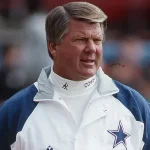
It’s Not About the Cap, It’s Always Been About the Cash Flow
An NFL scout recently told me that his team was targeting one of two players at the start of free agency in March 2025. In the conversations about those two players, one front office person said to the GM, “Why not go for both?” The GM remarked, “Come on, we’re never going to get permission to spend that much cash!”
Good news, they did end up landing one of those free agents on their target list. The other player signed a massive deal with another team.
Moral of the story: GMs are handicapped by their owner’s willingness to spend. There are many pundits and fans that believe the NFL salary cap legitimately handicaps a team’s ability to sign players, but that’s not true. It’s not the cap, it’s cash flow!
Look no further than what the Saints did earlier this year. As they approached the 2025 off-season they were $64+ million over the salary cap, yet they were able to sign free agent Justin Reid to a substantial contract and they were also able re-sign two of their own free-agents to decent sized deals, Chase Young and Juwan Johnson.
How Does the NFL Make and Split Money?
Before we can understand how cash flow directly impacts player acquisitions, we need to examine how NFL teams generate, organize, and distribute monies. NFL teams have a robust shared revenue structure. All NFL revenue is put into one of two pools: local or national.
Local revenue consist of ticket sales, luxury boxes, concessions, parking, merchandise, local TV contracts for pre-season games, and local corporate sponsors. Each team keeps 60% of all the local revenue that they generate and then 40% of it goes into the shared revenue pot.
National revenue is money that comes from the big TV contracts. 100% of the revenue from those TV contracts goes into the shared revenue pot.
The cash in the shared revenue pot is then split evenly between the 32 owners. That money is paid out over the course of the fiscal year.
How Does Cash Flow Impact Player Acquisition?
During the 2023–2024 season, the NFL total revenue was $20.5 billion, which included $13.3 billion in national shared revenue. Each NFL team got 1/32 of that national shared number, nearly $416.4 million in gross revenue per team. But that money wasn’t paid out all at once.
Shared revenue is paid out over the course of the fiscal year. So, for the 2023–2024 season, that $416.4 million figure, that each team got, was paid out from summer 2023 through spring 2024. Therefore, if any NFL team signed a player to a big contract, in the spring of 2023, that included any sort of big upfront bonus monies, the owner of that team shelled out the money (in March or April 2023), before the big dollars start rolling in later that calendar year. The owner is, in essence, fronting the cash.
For example, in April 2023 the Ravens signed Lamar Jackson to a five-year, $260 million contract which included a $72.5 million signing bonus. That signing bonus was due to Jackson immediately. The ownership was on the hook to pay out that $72.5 million.
Of course, the Baltimore Ravens owner Steve Bisciotti has made plenty of money in previous seasons since becoming the majority owner in 2004, so don’t feel bad for him. And, more importantly, he made plenty of monies in the 2023–2024 season, so he’s certainly recouped his cash.
What’s the Brass Tacks Here? It’s All About Saving Cash!
Some NFL owners do not want to shell out the cash. They would rather pay players as the money rolls in, over the course of the fiscal year. Therefore, those teams want to limit contracts with any big upfront bonus money.
But let’s be honest, this is normal in the modern business world. Right?
Lots of business owners want to delay shelling out cash until after projected revenue is realized. It’s not nefarious, it’s just sound cash flow management. But, of course, NFL fans don’t care about the billionaire’s cash flow (and I don’t blame the fans one bit).
Some NFL teams prefer to give minimal bonus money, but give players higher base salaries, because the base salaries are paid during the season, after the big shared revenue dollars start rolling in.
Of course, this means, when a great player demands big monies, the team will eventually let him walk in free agency or trade him, and one of the other NFL teams (who are willing to shell out the cash) will acquire that player—and they’ll be able to do so even if they have a bad salary cap situation because the NFL salary cap is fake.
And when a player leaves or is traded, lots of pundits will say something like, “Well, you know, it’s the salary cap!” And the ignorant fans will shout about it on social media; they’ll blame the player and call him disloyal.
For example, when the Bengals inevitably let standout defensive linemen Trey Hendrickson walk in free agency, they’ll blame the salary cap, and all of the NFL’s sycophants in the media will reinforce the narrative. And it seems the NFL players know that the narrative is baloney. For example, Joe Burrow recently said, “The Eagles are paying everybody. That seems like the way.”
Side Note: When a team signs a player to a big money contract and he turns out to be a bust (or a bad fit for their team), it often seems like they’re stuck with the player because of the big contract (e.g., DeShaun Watson). But the truth is any team can get out from a bad contract if they’re willing to eat the cash.
Dumping a player is impacted by cash flow just as much player acquisitions are impacted. We recently saw this with the Eagles and the Bryce Huff deal.
The Right Question: “Will They Spend?”
Rather than asking, “Which teams have cap space?”, instead, we should be asking, “Which owners are willing to spend their cash?”
Each season, the ownership of the teams project their revenue and they set their profit goals (just like every other business owner in the nation). And this informs how much the owners are willing to spend.
Front office executives and general managers are indeed limited in what they can or cannot do in the off-season, but the salary cap is not the thing that limits them. The thing that actually limits them is the owner’s profit goals or the owner’s willingness to shell out cash.
It’s never been about the salary cap. It’s always been all about cash!
Kenny is the chief content creator for thecapisfake.com and contributor at walterfootball.com. He’s also a adjunct professor, Christian minister, author, entrepreneur, and overall sports fanatic.


